My goal this year is to focus more on my own family history here so this is a start! This article is about my more recent ancestors but I feel it’s a good place to start our journey back through part of my family history. I have written about one of the people in this family before but at the time, I really didn’t have a great deal of information on her life. The previous article about Mary Jane “Polly” Owen was more about my personal thoughts on her life and her Owen family background. In a way, this post is an update to her story.
You can read that earlier story about her in this post:
Isaac Workman and Mary Jane “Polly” Owen are buried in Yolton Cemetery, Avena Illinois. A search of burials at Yolton Cemetery lists many other family names related to this research project. No burial information has been located for Amos Workman or his second wife Jane Conner/Matheny Workman. This research has verified that Mary Owen Workman lived until about 1895 and died while living with one of her children.
Today we are going to learn more about Mary Jane “Polly” Workman and the extended Workman family as they made the move to Illinois in 1838. This article details my recent research on Amos Workman and his extended family group. The research is an attempt to verify information contained in Fayette County Historical County Biographic sketch of Workman family in Fayette county, Illinois. For purposes of this specific research, I have used a land grant map that shows Isaac Workman’s original land purchases in 1838/39. The land grant map was found in a book, Family Maps of Fayette County, Illinois by Gregory A. Boyd J.D. Information on that book can be found here:
https://www.amazon.com/Family-Maps-Bond-County-Illinois/dp/1420311824/ref=tmm_pap_title_0?_encoding=UTF8&qid=1485800863&sr=1-9
This is the area that the biography pertains to when it mentions the family group’s arrival in Illinois so I have kept the land grant research to this one area for this project. I have also used a number of family histories and information from various family members and trees on Ancestry as well as my best friend, “Google”!
A number of years ago when I first started researching my Workman family ancestry, I received a biography from the Fayette County, Illinois Historical Society. For many years, this was all I had to go on as far as information for my ancestor, Amos Workman. Amos was my “Brick Wall” in genealogy terms. In many aspects, he still is my brick wall as there is still little information to be found on his history or the family history of his two wives. Because trying to tear down that brick wall was so frustrating, I set the Workman research aside for a number of years. Last year, I decided to make one more attempt at the Workman Wall. I purchased a dna test through Ancestry in the hopes that it would help break through that wall. In my mind, it was kind of my one last attempt. My thought was that if I didn’t get dna results to confirm any relationships, I would be finished with that branch and would resign myself to the fact that he was the end line for that branch. Thanks to Ancestry, that one last attempt was successful on most parts. The dna testing provided enough dna links and connections to place my ancestor Amos within the larger Workman family. Amos and his descendants have often been overlooked and left out of the many Workman histories that people refer to. The most they generally say about Amos is a short reference such as Amos was a son of William Workman and Phoebe Critchfield, he married a Rebecca. My dna test confirmed a connection to William and Phoebe and thus my connection back to the Workman and Critchfield families. What it did not do, however, was provide me with much more information than I already knew about Amos, his wives and his son Isaac who is my direct ancestor linking me back to Amos. I was still left with a brick wall, but now it at least had a crack in it so I was and am still optismistic about eventually tearing down that wall completely and discovering the mystery of Amos Workman. While the dna test can unlock some of the mysteries and provide some verification of family lines, it can not answer all of the questions or mysteries. The only way to truly answer those questions is through research, vast amounts of research! I have spent much of the past year doing that research on Amos and the entire Workman family. What I quickly realized was that in order to piece together Amos’ life, I had to look at the overall Workman history because there would be clues to Amos within all of those other family histories. This article provides an excellent explanation on why you need to look at the entire extended family group rather than just your individual direct line ancestry.
I learned early on that in order to find answers, you have to look beyond just your direct family ancestry. This research of the entire family led me to an interest in extended family groups and their migration from the early colonies westward. Amos Workman and his family were a part of that migration pattern. Their earliest beginnings were in New Amsterdam Colony, they then moved as a group to New Jersey and from there they went on To Maryland. Maryland is where Amos’ story began within that large extended family group. Even though we know very little about him, we can trace his migration with the families from Maryland to parts of Virginia, on to Ohio and Pennsylvania and eventually on to Illinois where the family finally settled in about 1838. As we learn more about the other family members and groups, a better picture of the mystery “brick wall” person such as Amos will begin to emerge. I will discuss more about Amos in a separate article, for now I just want to share the information that pertains mainly to the extended family group’s move from Ohio to Illinois.
My research of the early Workman families in Maryland inspired me to go back and take another look at the Fayette County biography where they mentioned the connections back to Maryland. The research of early Workmans in Maryland did not show direct family connections to those families mentioned in the biography so I began to wonder what the connection might be? I also wondered if the information in the biography could be verified somehow? While working with another distant family member who grew up in Maryland and was a descendant of Workman branches who remained in Maryland, she verified the connection to Logues and McKenzies not as connected family groups but as living near each other in Alleghany county Maryland. She stated that the Logues, McKenzies, Arnolds and Logsdons were Catholics and would have been living in the Arnold Settlement while the Workman, Wykcoff and other families lived on lands that were adjacent to the Arnold settlement. With this information, I began a more thorough research of the Fayette County biography to see what other infomation or clues it might provide. I started researching more of the descendants of Amos in the hopes that some of them might have answers or at least be asking the same questions as I was.
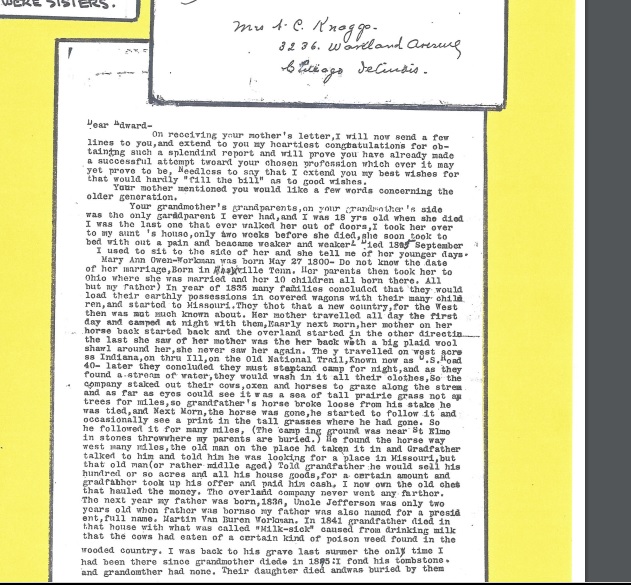
page 1 of letter written by Daisy Maude Workman Lichtenwalter Locke. Credit and much appreciation to ancestry member mindweaver for sharing!
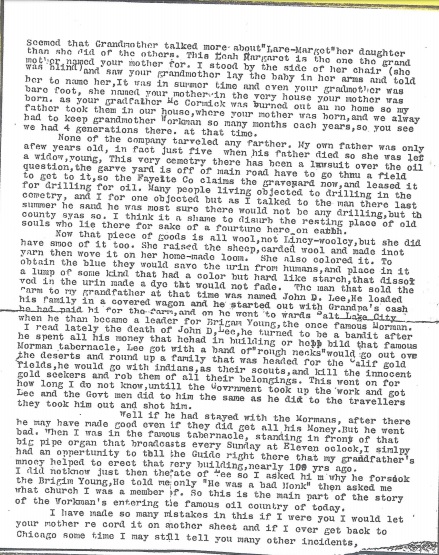
Page 2 of letter written by Daisy Maude Workman Lichtenwalter Locke. Credit and much appreciation to Ancestry member for sharing!
In retrospect, Yes, I probably should have went this route from the beginning because some of them did have important information that would shed light on the lives of Amos and Isaac. One family member was able to provide a letter written by one of her ancestors that describes the move from Ohio to Illinois and verifies much of the information contained in the biography regarding Isaac’s horse running away and how he came to purchase the land. Much thanks and credit to ancestry member mindweaver for sharing a letter written by Daisy Maude Workman Lichtenwalter Locke, descendant of Isaac Workman and Mary Jane Owen through son Martin VanBuren Workman. This letter provides a great deal of information and insight on Isaac’s wife Mary Jane Owen as well as information on the trip and the initial land purchase. As a result, it verifies much of the information in the biography and adds an important layer to the overall history of the Workman family. The letter adds to the history of another Workman branch, one that was seemingly unconnected to Amos and Isaac but for information provided in this letter. Daisy’s letter refers to the fact that Isaac Workman had interaction with John Doyle Lee in purchasing land from John Doyle Lee before John became connected to a distant relative of Isaac’s, John Workman. For more information on John Doyle Lee and John Workman family, please see separate article. This link is to the story I posted on Ancestry, but I will soon be posting that story here as well. I will provide that link when it gets posted here.
Letter of importance: Workman connections to John Doyle Lee
https://timeslipsblog.com/2017/01/31/a-letter-of-importance/
After receiving the copy of Daisy’s letter, I became even more interested in information that the biography might provide indirectly. One of the other pieces of information in the biography was the contributors to the story. I looked into those contributors to see how they may have been connected to the families in the biography and this is what I found.
contributors to Fayette County historical society biography:
Arthur Buchanan- most likely a family member of Mary Ann McConkey daughter of George Washington McConkey, granddaughter of Mary Jane Owen. Mary Ann McConkey married an Albert Buchanan. Other Buchanan connections go back to John Jacob Dively and Margaret Earnest. I was unable to confirm which Arthur Buchanan was involved in contributing to the biography because there was more than one Arthur Buchanan who could have provided the informatin but which ever Arthur it was, he most likely would have had family information going back to the earliest years in Illinois and been connected to the Owen families as well as Dively and Earnest families who are connected to Workman family.
Mrs. Katie Owen Whitefort: daughter of John Wilson Owen and Tolitha June Jackson. Granddaughter of George Hartzell Owen and Lucinda Ralston Owen. Great granddaughter of James Owen and Nancy Brashears. James was a brother of Mary Jane Owen who married Isaac Workman. Katie’s Grandmother Lucinda Ralston was daughter of Mary Ann Kyser and Joseph Ralston. Mary Ann Kyser’s Mother was Margaret Workman, sister of Amos Workman. This would make Katie Owen Whitefort a descendant of both Owens families and earlier Workman families. According to source information, she was a school teacher, did not marry until later in life and had no children. Because of her unique link to the families, she may have had a great deal of family history information regarding both families and those early years. Katie had two brothers, and as far as I can tell there was only one descendant of that family branch.
Mrs. Joe Rhodes: Theda Mildred Ellison Rhodes-husband William Joseph Rhodes. Theda Ellison 1899-1990, daughter of Ina Della Workman and Edward Franklin Ellison. Ina Della Workman was daughter of Isaac Wesley Workman, granddaughter of Amos Workman jr, great granddaughter of Isaac Workman and Mary Jane Owen. Her husband William Joseph Rhodes’ family would have had ties back that went back to McKenzie families that were listed in the biography as families in Maryland.
Mrs. Raymond McElheney- Mrs. Raymond McElheney is Phyllis E Springman, daughter of Frank Springman and Maude Workman. Maude Workman was daughter of Isham Douglas Workman and Rosabelle Hedges. Isham was son of Ireal Owen Workman and Lucillia Jennings. Isreal was son of Amos Workman and Jane Connor Matheny.
Once I connected the contributors to their family connections, I decided to address another piece of information from the biography. The biography stated that there was a group of 16 families traveling together from Ohio on their way to Texas in 1838. Daisy’s letter did not mention the number of people in the group but did dispute the mention of Texas. Her letter mentioned that they were on their way to Missouri.
The contributors were unsure of how many of the families stayed in Illinois and how many continued on to Texas. So far I have found no evidence to corroborate the mention of them being on their way to Texas, and I have yet to find any of the extended family group that might have went on to Texas. Daisy Workman Lichtenwalter’s letter states that the group was on their way to Missouri, and a number of the family members did eventually move on to Missouri. Daisy also mentions in her letter that none of the party traveled any further so that would suggest that all 16 families settled in Illinois initially. A search of the early land grants in Fayette county along with a search of families who settled in the nearby area should give us a good indication or approximation of which families were part of this wagon train in 1838. In order to come up with a possible list of families, I used family connections along with a land grant map showing Isaac Workman’s original land grants of 1838/1839.

Fayette county Illinois family group land map. Credit to Family Maps of Fayette County, Illinois by Gregory A Boyd
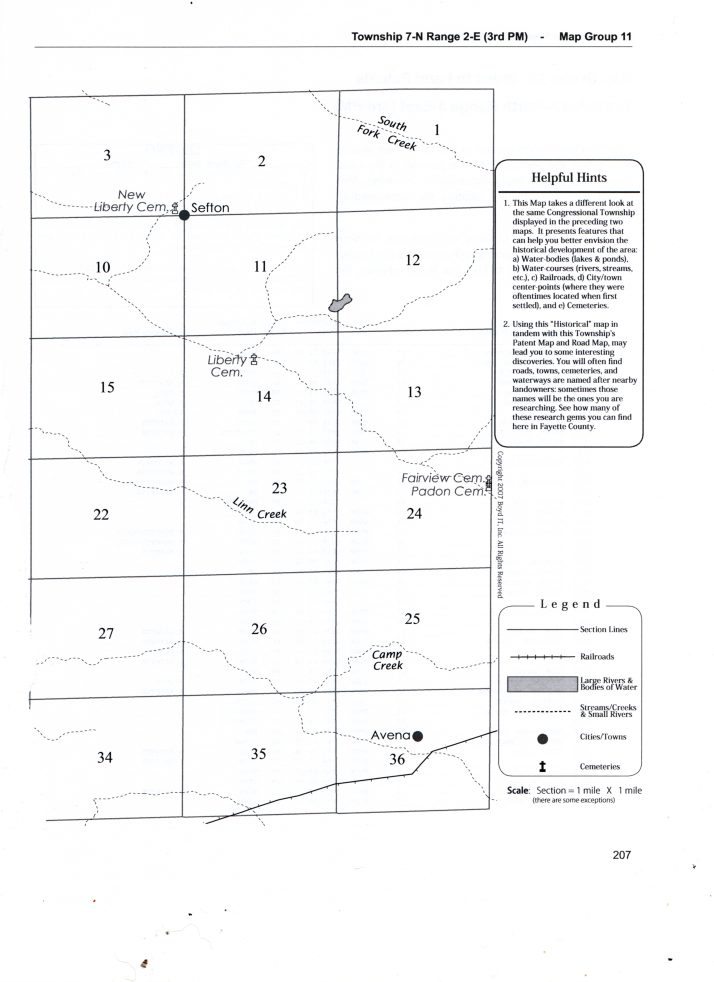
map of area that Amos and Isaac settled in showing locations of nearby townships, cemeteries as well as streams and creeks. Credit to Family Maps Fayette County, Illinois by Gregory A Boyd
I limited my focus to that one area because that is the area mentioned in the biography where the group camped while Isaac searched for the missing horse, then decided to stay. The land map shows the connected families that settled in that area. I looked at the families in that area, their possible family connections and dates of land grants shown on the map. I also looked at individual families and their migration from Ohio to Illinois to verify that their move would coincide closely with the time frame of this trip around 1838. For many of the families, I had to use births of their children to see approximately when they would have made the move to Illinois. I also took into consideration that some of the birth places and or dates may have been incorrect or approximated by individual tree members as many of them had no actual documents to base the date or place on. The list is an approximation or general idea of who the families in that group of 16 families might have been. In most cases, they share a family link or connection which I have provided. In a few cases, such as the Earnest families, there is not a known family connection prior to Illinois but rather a link that connects them back to Ohio or Pennsylvania. At some point in the future there may be a proven family connection going further back but I have not found it yet.
I have attempted to break the families down into individual family groups that reflect how they may have been traveling to account for the number of families in the group. I have also used the land grant map to place them in the area after the trip when ever possible.
1. Amos Workman with wife Jane and at least 7 children- Isaac, Amos’ oldest son would be a separate family. There is no additional information on Joseph born about 1818, so it is possible that he did not make the move. Amos is shown as owning land on the land grant map. His purchase date was 1839
2. Isaac Workman with wife Mary Jane Owen and all 10 of their children. His 1838/39 land purchases are shown on the land grant map.
3. James Owen and wife Nancy Brashears-brother to Mary Jane Owen, his daughter Mary Owen is listed as being born in Fayette county in 1838. There are a number of land purchase shown for James Owen with earliest one in this area being 1841. He may have purchased land in another section earlier than that.
4. Nathan Clinton Owen brother of Mary Jane and James. Nathan is listed as marrying second wife Mary Ann Griffith 1839 in Fayette county. There is a William Griffith with a land grant in the area- his land purchase is shown as 1839 so possibly he was a relative of Mary Ann’s and was a part of the original party but we can not be certain. Nathan is not shown as purchasing land in this specific area at that time but he may have been living with James during that time as he was a widower with small children prior to his marriage to Mary Ann Griffith. His first wife was Catherine Brashears, sister to Nancy Brashears who was married to his brother James. She died in 1835 so he would have made this trip on his own with three very young children.
One added note for Owen family members: George Washington McConkey, Mary Jane Owen’s half brother moved to Fayette county, but it looks like he may have made the move a few year later around 1843. He may have waited until other family members were settled well to make the move himself.
Earnest family-Samuel Ernest is shown as having a land grant in the same area, purchased 1839. The Earnest family is connected in two ways. The first is that Harriet Earnest, a relative of Samuel’s later married Isaac Workman’s son William. The second way is less obvious and requires looking further back into the families for it to make sense why the Earnest families may have been connected earlier than their meeting in Fayette county. This connection will also bring with it another family that may have been part of the original group. One of the other early families shown on the map and shown to have a continued connection to Workman and Owen families was John Jacob Dively. John Jacob Dively was married to a Margaret Earnest. Margaret Earnest was born abt 1795 in Somerset county, Pennsylvania in the same area that the other Earnest families in Fayette county list as being at. I have no definitive or absolute proof to connect her to them, but I believe she was most likely a sister to William Earnest and possibly David Earnest. They were probably all related and all made the move together. John Jacob Dively’s original property was in the same area as Samuel Earnest who was most likely another brother of Margaret. These families may have had connections to Owen families back to Pennsylvania. In order to better understand these connections and for them to begin making more sense, you need to look at the family histories and you need to look at them in a broader context than just one family’s direct line ancestry. The Earnest and Dively families go back to Pennsylvania where Mary Jane Owen and her brothers were from before moving to Ohio. Mary Jane Owen’s family history would provide some clues to these connections. Her Father’s family were Welsh Quakers and her Mother was most probably probably Pennsylvania “Dutch” which was translated from Deitsch or German. The Earnests and Divelys were most likely part of the Pennsylvania Deitsch groups. An Earnest family history mentions this association and in a Workman biography, Charles Workman also mentions the Pennsylvania and “Dutch” connection.
5&6 The Earnest families would have made up at least two family groups depending on how they chose to travel. We know of William, David and Samuel but it’s not clear of the exact family connection. William and David were most likely brothers and from all indications, David may not have remained in Illinois. Samuel was either a brother to them or was possibly a son of David. There are no land patents for either William or David but there are for Samuel. At the time of the move, Samuel was unmarried so was most likely traveling with either William or David. Margaret would have been in a separate family group traveling with husband John Jacob Dively.
7. Dively family would have been John Jacob with wife Margaret and 6 children. They would have all traveled together as one household or family as none of their children were married at the time of this move. It should also be noted here that there is a census record for 1830 showing Jacob Dively and family in Knox county Ohio. From looking at Dively family history, it looks like John Jacob was the only one of his family to make the move on to Illinois. Prior to being in Ohio, they were in Somerset county, Pennsylvania where they were married at.
Most of the above mentioned families, except for the Earnest family, would have had a direct family connection to each other so it makes sense they would have traveled together as a group. They would have made up at least 7 or 8 of the families. The rest of the group was most likely made up those families listed in the biography. I have researched those families and traced them back to the early connections they would have had with Amos Workman’s family. The Logues and Mckenzies both go back to Maryland and follow the same migration pattern as Amos and son Isaac. Both of these large extended families were in the same areas of Ohio as Amos Workman families prior to the move to Illinois. I have not yet found intermarriages between Workmans and Logues or McKenzies prior to Illinois but I have not done an in depth search of all of those families either so there could be family connections that I have not yet run across. The Logsdon connection to Workman families is not very prevalent so I do not think those families would have been in this wagon train. There is another family not mentioned in the biography that does have strong connections back to Maryland and could eventually provide clues to Amos’ second wife who is listed as Jane Conner/Connor and or Matheny in various sources and records. This would be the Sapp family.
The Sapp family goes back to Maryland, and besides having a connection to Matheny families, they have a connection to the Critchfield and Workman families. Amos Workman’s Mother was Phoebe Critchfield and his aunt was Hester Critchfield. If you follow the Sapp family line all the way back to Maryland, you will find a George Sapp born 1743 died 1810 in Knox county Ohio. He married Christina Texter in 1765. Their daughter Catherine “Peggy” Sapp married a Joseph Critchfield who was a relative of Phoebe and Hester Critchfield. The Sapp family had a close connection to Critchfields in that another daughter, Margaret married William Critchfield a brother of Joseph Critchield. An added connection to the Workmans at that time-their son Daniel Sapp married a Mary Robeson. Mary Robeson had a brother Solomon who married a Rebecca Workman, while her sister Elizabeth married David Workman who was a son of Stephen Workman and Hester Critchfield. Their son Joseph M. Sapp married an Elizabeth Starner. All of the children of Joseph and Elizabeth eventually made the move to Illinois. One son, William Sapp’s history gives an explanation that would coincide somewhat with our biography. It lists a time period of 1839 and says, “With several hundred relatives and friends including his brothers and sisters by forming a wagon train they left Knox County Ohio and moved to Illinois. William and Catherine had one small daughter and were pregnant with their second child.” William’s information states 1839, but there were land agreements dated 1838 so that would suggest that the families arrived in 1838. They probably arrived and began settling in 1838 with initial land purchases by family groups.
I believe that the 16 families mentioned in the biography were part of a much larger group as William Sapp’s information suggests. The 16 families referenced in the biography could be referring to those who camped with Isaac Workman and settled in the area where he ended up purchasing land. The Logue, McKenzies and Logsdons may have been part of the larger group that William Sapp referred to. A look at the land map will show that two Sapp brothers settled near Isaac and Amos Workman. Their land grants had purchase dates of 1839, the same as Amos Workman’s. This does not mean they were not on the land before that, it simply means that was the year the actual legal purchase agreement was made. They may have been renting the land previously, or the land in question was open and unclaimed when they settled there but they did not finalize purchase agreements until 1839. These two Sapp brothers and the location of their lands near Amos and Isaac provide a clue to the mysterious Matheny connection. As I mentioned previously, Amos Workman’s second wife was Jane Conner/Connor or Matheny. Some records and sources list Conner while others mention Matheny so she could have been a Jane Conner married to a Matheny prior to marriage Amos, or she could have been a Jane Matheny married to a Conner? Either way, she seems to have had some connection to Connor and Matheny families. Daniel Sapp, one of the sons of Joseph Sapp and Elizabeth Starner married a Sarah Margaret Matheny (no other information known about her other than birth date of 1808). Charles Sapp, another son of Joseph and Elizabeth, married a Mary Elizabeth Matheny born 1812 in Knox county, Father’s name possibly Benjamin. Given the fact that Amos’ wife Jane is often linked to Matheny families, I believe that these two Sapp families may have had some family connection to Amos through the earlier Critchfield connections and to Jane through some connection to Matheny families. For this reason, I believe that Charles and Daniel Sapp families may have been in this group of families.
8. Charles Sapp with wife Mary Elizabeth and 4 children
9. Daniel Sapp with wife Sarah and 5 children
This would account for at least 9 or 10 of the supposed 16 familes in the wagon train that all had some link to each other through either Workman, Owen or Earnest family connections. The remaining group members may well have been Logues, Mckenzies or others who made trip with this group and camped with them but did not settle in the same close location as these above listed families did.
The National Road and it’s connection to the family migration from Maryland to Illinois.
The last item I want to address here is not mentioned in the family biography but Daisy Lichtenwalter does mention it in her letter. Daisy mentions the Old National Trail or Road in her letter so I just want to touch on the National Road as it pertains to family migration from Maryland on to Illinois. The construction of the National Road and it’s route directly corresponds to the extended family’s migration out of Maryland. You can look at the family histories and see that their moves across the colonies, territories and states closely followed the years of construction of the Old National Road.
In 1802, President Jefferson’s Secretary of the Treasury, Albert Gallatin, proposed a plan that sparked interest, known as the “Origin of the National Road”. The plan allocated money from land sales, allowing a percentage to be used for the making of the first federally funded highway. The road began in Maryland near Frostburg in Alleghany county, where our extended Workman families were in the mid 1700s. During the later 1700s many of them were migrating back and forth between Monongalia county in Virginia, Alleghany county Maryland and Belmont county Ohio. The construction of the National Road made their migration between the areas easier. As the road progressed, so did their journey westward. The road would eventually connect Alleghany county and areas of Monongalia county to Belmont county Ohio where the earliest record for Amos Workman is documented other than his birth in Frostburg, Maryland. In the late 1700s around 1790s, he supposedly had land in Monongalia county and when he sold the land, he listed his home of record as Belmont county. Belmont county was on the border of Ohio and West Virginia. By about 1815-1820, most of the families had followed the road as it was making it’s way through Ohio. The majority of families were settled together in Knox county and adjacent areas, and remained there throughout the 1820s until the mid 1830s. The road building was an extremely slow process and it took almost ten years for the road to make it’s way through areas of Ohio.

The National Road was also known as the Cumberland Road and this shows the early route in Ohio through Indiana and on to Illinois.
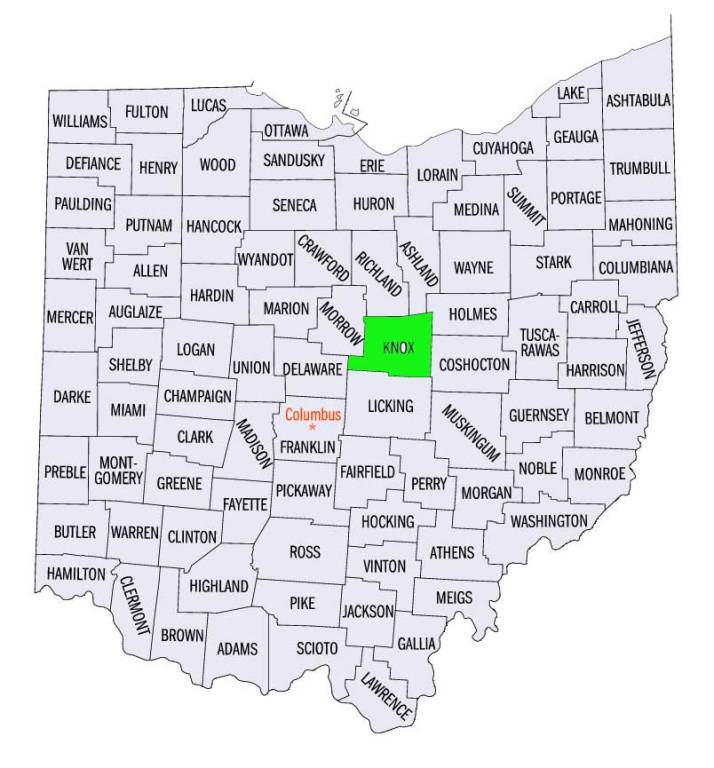
Knox county Ohio in relation to other counties and to Columbus. The National Road was designed to run through capitols of each state so this shows that living in Knox county, the families would have been close to the National Road. It also shows location of Fairfield where Isaac Workman married Mary Jane Owen.
http://fayette.illinoisgenweb.org/nationalroad/nationalroad.html
The first section of the National Road was approved in 1806 by an act of congress and signed by President Thomas Jefferson, officially establishing a national highway from Cumberland, Maryland to the Mississippi. There was one catch, the road would run through the capitals of each state along the route. According to congressional requirements the road was to be sixty-six feet wide and be surfaced with stone and covered with gravel, along with bridges that were to be made of stone. Mandates were placed by legislators for the protection of citizens that prohibited a tree stump on the National Road to exceed 15 inches in height. Surveyors were sent to calculate and measure westward trails. The road would eventually pass through Maryland, Pennsylvania, Ohio, Virginia, Indiana, and Illinois.
Even though, contracts were not granted until 1811, road construction did not begin until 1815 in Cumberland, Maryland and reached Wheeling, Virginia (now West Virginia) in 1818, being delayed because of the war of 1812. From Wheeling, Ohio was only a bridge length away. Many families preferred to migrate by Ohio River boats than by slow wagon journey westward through the wilderness of deep ruts and low lying stumps. The terrain varied from state to state as well as the quality of bridges and roads.
Original specifications for the road were used before the utilization of Macadamization. This rather expensive and sophisticated engineering technique used layers of stone to build the road. To make the road, the ground would have to be dug 12-18 inches deep and stones approximately 7 inches in diameter were used for the base. Then smaller stones that passed through a three-inch ring and graded down. Macadamization was the ideal surface for the time, but due to the expense it was not available everywhere. Plank roads, literally building of a floor of timber as a roadway, was used and look upon as a perfect answer to providing smooth, dust-free roads in muddy rural areas. Over time, deteriation was common among these timber highways and plank roads were not used everywhere.
By 1820, money was appropriated to survey the remainder of the states: Ohio, Indiana and Illinois. Road building was a huge task. And a variety of skills were needed. Surveyors laid out paths; engineers oversaw construction. Masons cut and worked the stone, and carpenters framed bridges. Numerous laborers pulled and tugged, cut and hauled and leveled to clear the path. By 1822, President James Monroe vetoed a proposed legislation to turn the National Road into a federal toll road. Ownership of the road was handed to the states through which the road passed. The states built tollhouses along the road to collect tolls to help fund repairs needed for the road.
Those traveling west of the Alleghenies on the National Road considered Ohio the Frontier and Indiana and Illinois the West. In the early 1800s, thousands of movers and tons of merchandise moved across the National Road, despite its haphazard quality. They came from the Shenandoah Valley and down from rocky New England, pausing to rest briefly at Cumberland, then driving on toward Uniontown and Wheeling. Arriving Eastern goods could either be sent upriver from Wheeling to Pittsburgh or downstream to ports in Ohio, Indiana and on to Louisiana. Agricultural produce and materials from the South and West came upriver to be unloaded at Wheeling, then to be carried eastward to cities as far away as Baltimore.
A horde of emigrants hurried westward during the golden decades prior to the Civil War. Author P. D. Jordan described it this way, “Their covered wagons had been forming an endless procession ever since the Cumberland Road was opened. After they settled Pennsylvania, they filled Ohio. When Ohio land no longer was available, they clumped on into Indiana to erect their homes and plant their fields on the banks of the Wabash. They clung to the National Road like a mosquito to a denizen of the swampy American Bottoms. It was the people’s highway, and the people crowded it from rim to edge until their carts, wagons, stages and carriages challenged one another for the right of way. (Philip D. Jordan, The National Road, Indianapolis: Bobbs-Merrill Co., 1948.)
It took almost another 10 years for the road to reach it’s end at Vandalia Illinois. In 1828, a surveyor named Joseph Shriver surveyed the eighty-nine mile route from Indiana to Vandalia, IL. Many hardships endured during his survey in July of that year. He recorded a few of these in his survey notes:
“Saturday, July 19th, 1828
Run 10-3/4 miles today- 8 or 9 miles of it Prairie-the dividing ground between the Little Walbash and Kaskaskia.
Encamped on the waters of the Kaskaskia. Lost an ox from the team today, -his death occasioned by the heat and the want of water in xing the prairie.
Sunday, July 20th, 1828
Run 7 miles today over ground not very good for a road. About one half Prairie land, the remainder broken. Encamped on a small spring branch, waters of the stream which puts into the Kaskaskia River opposite Vandalia.
Monday July 21 st, 1828
Run within a mile or less of Vandalia when a heavy rain come on and being in an extensive bottom could not proceed
further—encamped. Provisions scarce: breakfast on meat and coffee: –dined on honey and meat and supped on roasted flitch and coffee. Notwithstanding it being so near to Vandalia there is yet not the least sign of anything like a settlement, much less the seat of a Government of a State. Strange case to be within hearing distance of a city and starving.”
It was not long after Shriver’s Surveys, Congress appropriated $40,000 in 1830 to open the Illinois section of the road. Later, additional money was granted each year for the much needed work of clearing land, grading and the bridge building work. New towns began to spring up over night along the route. Many businesses began to set up shop along the road to accommodate the needs of the workers of the National Road. Huge Conestoga Wagons came in droves, traveling the dusty road westward.
In 1838 the road had finally reached its end to Vandalia, Illinois, the current state capital at that time. During the summer of 1839 the National Road was open for travel in Illinois. Although the road was surveyed to Jefferson City, Missouri, construction was halted at Vandalia, Illinois. Due to lack of funding by the government and squabbling over the route for which the road would take. Missouri wanted the road to travel through St. Louis, MO and Illinois wanting it to travel through Alton, Illinois, a town located along the Mississippi River. After a total of 600 miles and approximately $7,000,000 the road to the wilderness was completed.
Our ancestors remained in Ohio until the road to Illinois was completed and then followed the newly completed road as far as they could. Daisy Workman Lichtenwalter’s letter states that their intent was to head toward Missouri where the road was originally suppose to continue on to. When they reached the end of the road in Illinois they most likely learned that there would be no continuation of the road on toward Missouri. While their reasoning for not continuing on was initially attributed to the horse running off and that they decided they liked what they saw in Illinois, the fact that there would be no future road on to Missouri probably affected their decision to stay in Illinois.
Additional Resources for National Road:
https://en.wikipedia.org/wiki/National_Road
https://www.fhwa.dot.gov/infrastructure/back0103.cfm
http://www.legendsofamerica.com/ah-nationalroad.html

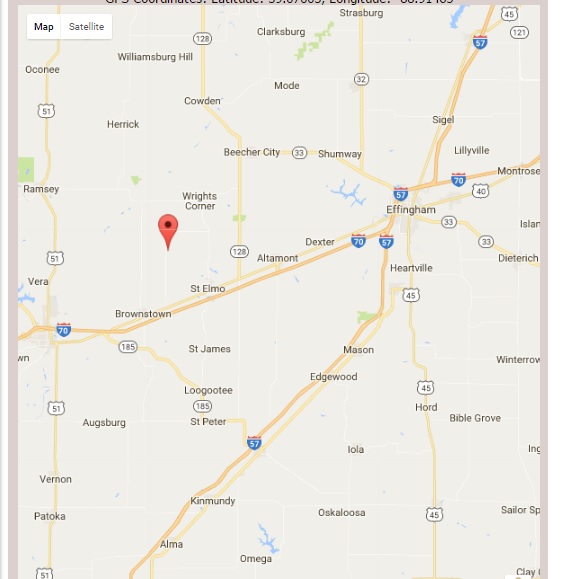


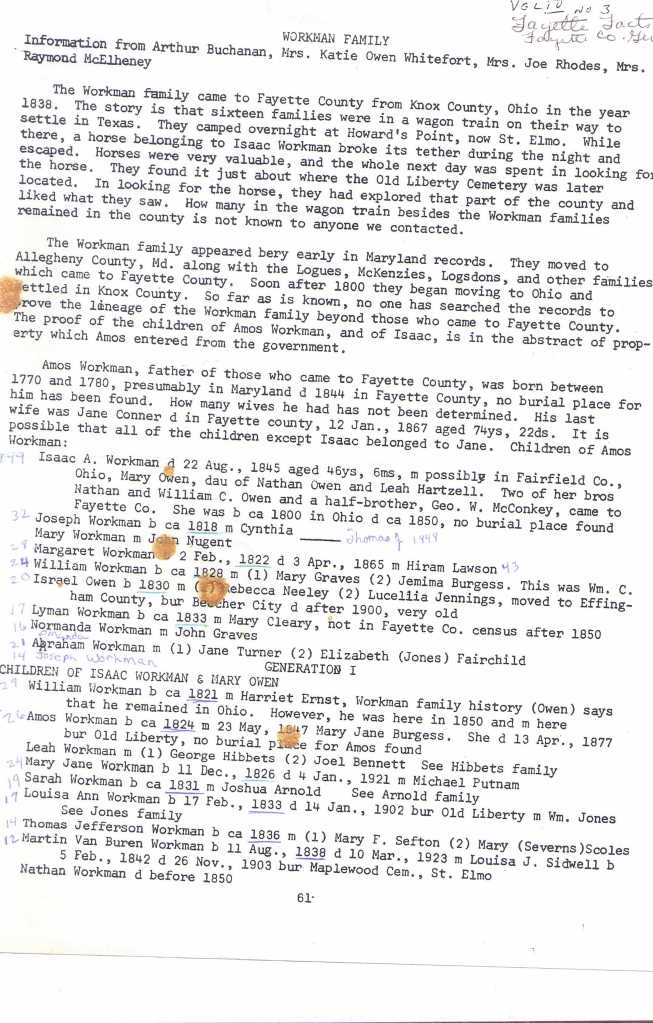
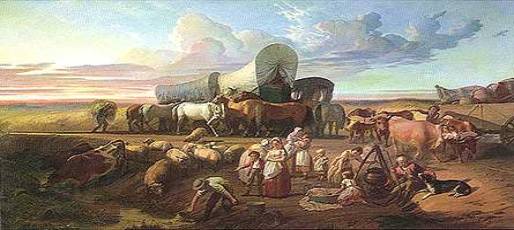
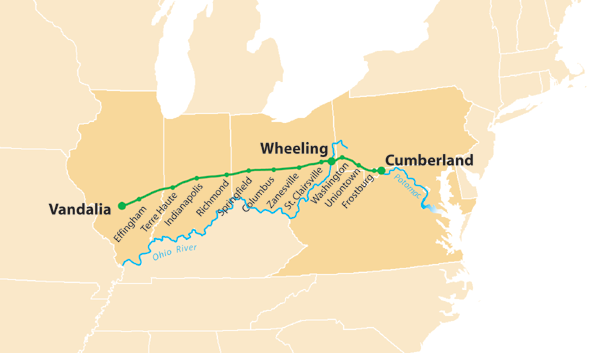
Thank you for your well written post. I too have a Fayette county brick wall ancestor. My ancestory, Thomas Jefferson Sapp Sr (1818-1903) was apparently born in Maryland (but one census identified him as being born in Ohio). I found him in an 1850 Fayette county census as well as in an 1843 Fayette county marriage record to Harriet Ewings. Unforunately, I cannot tie him to any of the other Sapp families but it is my assumption that he might have been part of this group that migrated from Maryland to Ohio and then to Illinois.
LikeLike
If he was born in 1818, he was most likely born in Maryland and may have moved to Ohio as a child. I don’t have him listed in any of the Sapp families that I researched but I tried to focus on the ones that I found connected to Workman or Critchfield families. I don’t have any Ewings in my list either so I can’t help you there. A couple of ideas that might help: 1. look at the families his children married into, it may give you clues to the family groups that he was close to and identifying with? I noticed that many of the children in the families married brothers or sisters of another family. They also had a tendency to marry people who were related to them either indirectly or in some cases, almost too directly! I was able to sort out many of the Workman families by looking at the larger group surrounding them. When I started tracing the families that they married into, I found they were all connected in some way. 2. Look at the census records again and look for Sapp families and Ewing families that may have been living near them. This will give you a big clue as to which family they may have been connected to?
LikeLike
Great ?I should definitely pronounce, impressed with your site. I had no trouble navigating through all the tabs and related information ended up being truly simple to do to access. I recently found what I hoped for before you know it at all. Reasonably unusual. Is likely to appreciate it for those who add forums or anything, website theme . a tones way for your client to communicate. Excellent task..
LikeLike
I am so glad a came upon this site. I am from Brownstown, Illinois, and have family within Fayette county. Although I was not looking for an ancestry site, I have enjoyed reading your articles!! I am a huge history fan, and loved reading about your family’s history. Good luck to your continued research!!!!!
LikeLike
Thank you Lisa! I’m glad you enjoyed the history. I’ve taken time off from blogging to focus on researching more of my family history but I’m hoping to return soon with more stories about my family’s journey from England and Holland to the early colonies on Long Island before they moved on to New Jersey and then went separate paths westward.
LikeLike
Thank you for the sensible critique. Me & my neighbor were just preparing to do some research on this. We got a grab a book from our area library but I think I learned more from this post. I’m very glad to see such great information being shared freely out there.
LikeLiked by 1 person
I randomly stumbled upon this and couldn’t be more excited!!! I am part of this Family Tree, sort of!!! I can account for ties to Isaac Workman/Phoebe and then to Stephen Workman/Helen Critchfield then I’m assuming their son Benjamin Workman/Priscilla Doss then Josiah Doss Workman/Sarah Diston then Benjamin Franklin Workman/Julia Ann Hill then Ebenezer Baines Workman/Cora Lucille Rush then Charles Edgar Workman/Evelyn Augusta Carr then my grandparents Charles Edgar Workman Jr/ Helen Mae Hutchcraft and my mother Victoria Ann Workman/Terry Dewayne Shamblin and then me Sarah Ann Collins(Workman). This has been such an awesome read. I am so happy to learn new information about my family history❤
LikeLiked by 1 person
Hi Sarah, Yes you are indeed part of this vast family legacy! I’ve spent the past few years researching all of the Workman connections and history from their earliest arrival in New Amsterdam then the paths different branches of the family took going to New Jersey then on to Pennsylvania and Maryland before they went on different paths. I’ve used dna research to put together much of the family history. From my research I have figured out that my 5th great Grandfather William Workman and your ancestor Stephen Workman were most likely brothers not cousins. They went from Maryland to the same area of Pennsylvania and West Virginia, then made the move to Ohio around the same time. Stephen was in Virginia before going to Ohio and some of his children remained there while the others moved on to Ohio.
LikeLike